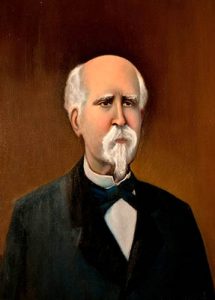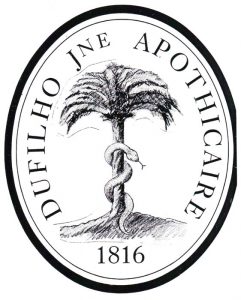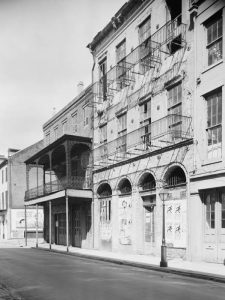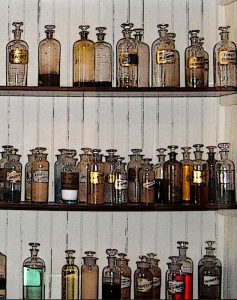Haunted Pharmacy Museum in New Orleans – Legends of America (original) (raw)
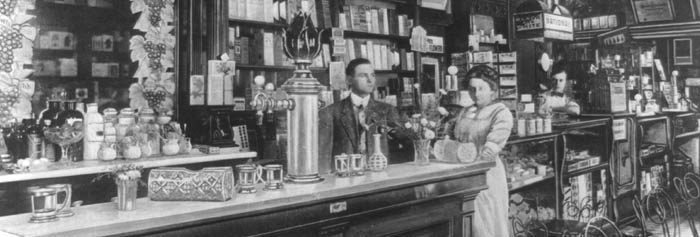
19th Century Pharmacy
The New Orleans Pharmacy Museum is not only a great attraction, but it was the first apothecary shop in the United States, was established by the first licensed pharmacist in the country, and is also said to be haunted due to the atrocities in this building.
Louis Dufilho Jr
The pharmacy was opened by Louis Dufilho Jr. in 1823. Louis was born in Mirande, France, in 1788 to Jean and Jeanne Marie Bonnet Dufilho, who moved the family to New Orleans, Louisiana, between 1800 and 1803.
Louis had an older brother, who was also named Louis, who opened an Apothecary Shop at 12 Toulouse Street with his father, Jean, in about 1805.
When Louis Dufilho Jr. grew up, he also wanted to be a pharmacist and returned to Europe, where he graduated from the College of Pharmacy in Paris, France, in 1816. When he returned, he opened a pharmacy with his brother at 63 Chartres Street. In 1816, after the State of Louisiana passed laws on who could become a pharmacist and physician, Louis J. Dufilho, Jr. was the first to pass the licensing examination and became America’s first licensed Pharmacist.
In those days, a pharmacist was more like a doctor today, diagnosing and treating health conditions. Many medicines were made by blending plants, herbs, minerals, animal parts, and insects as ingredients. These were then crushed to make pills, edible wafers, liquids, salves, and injectable medicines. In addition to medicines, they also utilized leeches, opium, and Voodoo remedies.
Louis Dufilho Jr Pharmacy Sign
In 1819, Dufilho married Emy Adel Becnel, and the couple eventually had seven children. In about 1822, Louis Jr. built a Creole townhouse in the French Quarter, and in 1823, he opened his Pharmacy on the ground floor at the present-day location of the Pharmacy Museum. The building also contained a hardware store, soda fountain, and a post office, making it a popular spot with local citizens.
During his tenure, Dufilho experimented with new and more effective medicines, including the use of quinine to battle the dreaded yellow fever that killed one in six people in New Orleans, including Dufhilo’s brother. He also joined the Howard Association, a precursor to the Red Cross.
After more than three decades of dedicated work, Dufilho sold the business to Dr. James Dupas for $18,000 in 1855. Dufilho then went to France, where he died a short time later.
With Dr. Dupas then running the pharmacy, its popularity and reputation began to suffer. Gossip began to make the rounds that he was engaged in unethical and experimental pharmacology, mixing tonics that didn’t seem to work or using addictive components such as cocaine and heroin in his prescriptions. It is also said that he added voodoo rites and rituals to his practice. He was also accused of performing medical experiments utilizing razor-sharp drills, scissors, and scalpels that were unnecessary.
Dufilho Pharmacy by Frances Benjamin Johnston, about 1935
Allegedly, he experimented on pregnant slaves, utilizing unknown drugs that had their origins in voodoo or employed poisons that resulted in congenital disabilities, miscarriages, and even the death of both mother and baby.
Making matters worse, some neighbors began to see patients entering the building but failing to exit. When the doctor was questioned about these missing patients, he suggested they had moved back to France.
For over a decade, Dr. Dupas continued with his ghastly experiments until he finally died in 1867 due to complications of syphilis. Perhaps the doctor was driven to madness by this disease, or maybe he was just plain evil. After his death, his crimes were discovered when many of the remains of missing patients were found buried in his courtyard behind the building.
Today, the building has been restored into a recreation of Dr. Dufhilo’s apothecary shop that displays 19th-century mortar and pestles, glass medicine bottles, instruments and implements, and even a jar marked “leeches.” Within the glass and mahogany cabinets, antique handblown apothecary jars containing crude drugs, medicinal herbs, and voodoo powders can also be seen, as well as old medicines, tonics, and liniment. These historical artifacts come from all over the world. The museum also features an old-fashioned soda fountain used to help patients wash down their medicines.
Old-fashioned medicines & tonics.
The New Orleans Pharmacy Museum doesn’t advertise or promote that it is haunted, for its focus is to educate visitors on the history of pharmacology and its history in New Orleans. However, the legends persist.
The evil Dr. James Dupas is said to be the most common haunting figure. The ghostly image of a short, stocky, late middle-aged man with a mustache has been spied roaming the premises. Wearing a brown tophat and brown suit under a white lab coat, the spirit is most seen on the curving stairway that connects the back of the shop to the second floor. The ghostly Dr. Dupus is also said to have a habit of opening cabinets, throwing books, moving items, looking into bottles, rearranging locked displays, and frequently setting off the burglar alarm.
Other ghosts are also said to lurk within the museum, including a woman in the courtyard that some think may have been a prior victim. Two children have also been spied on both inside and outside of the building.
Some visitors have reported feeling shoved from behind when no one is there. Pregnant women have felt nauseated or experienced abdominal cramps on the second floor, where Dupas was said to perform his ghastly experiments on pregnant slaves.
The New Orleans Pharmacy Museum is located at 514 Chartres Street.
